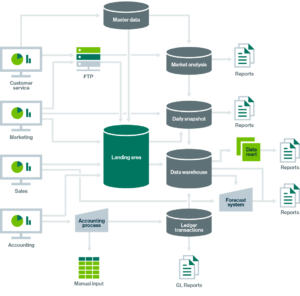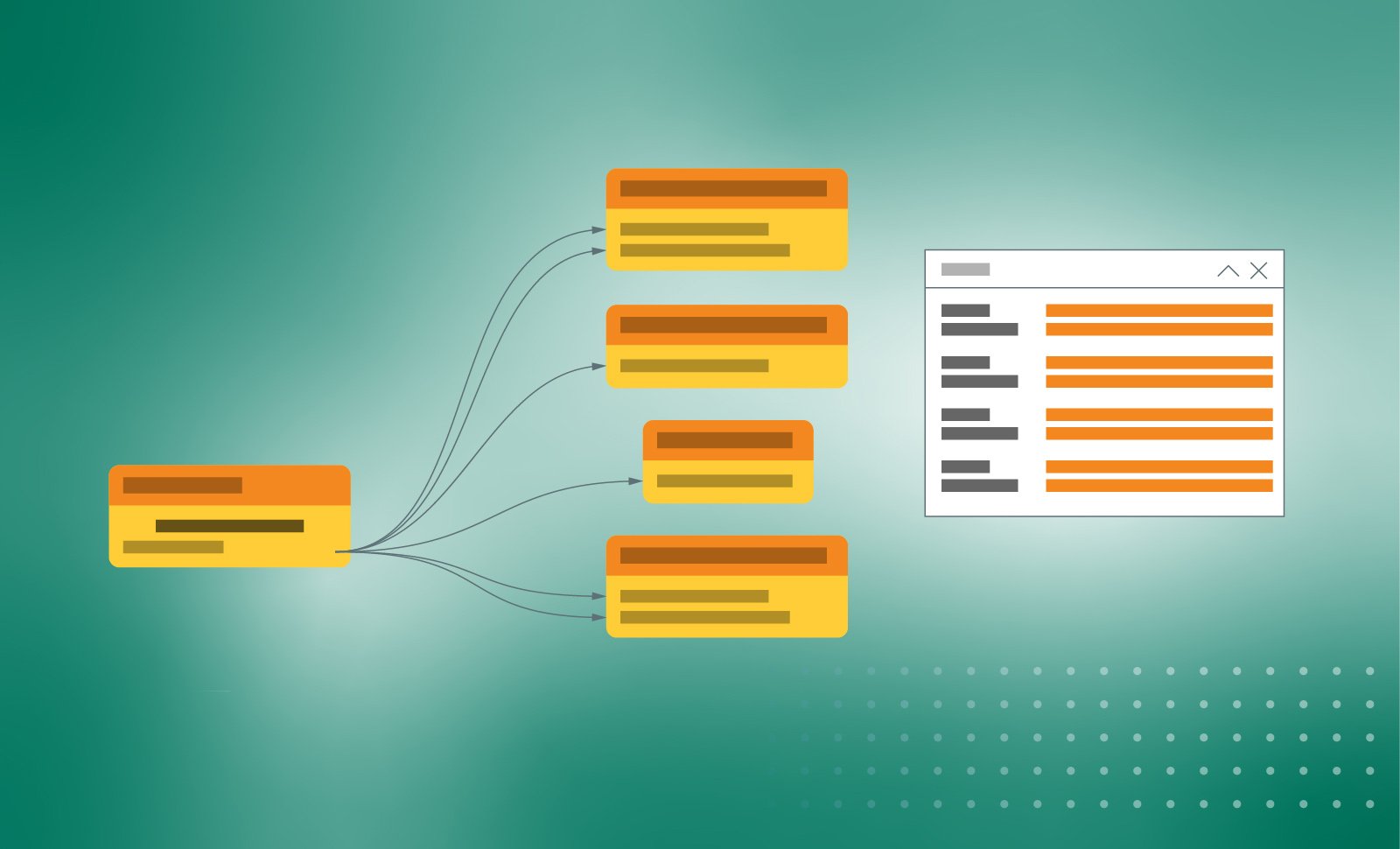Data lineage describes how data transforms and flows as it is transported from source to destination, across its entire data lifecycle. It helps organizations get the full story behind their data so they can use their data to make impactful business decisions.
Why is data lineage important?
Data lineage is important because it ensures that an organization’s data is accurate and trusted. Without data lineage, business analysts have no visibility into the correctness of their data, and therefore, could be basing important decisions off of inaccurate and incomplete data. Data lineage enables business analysts to see where their data is coming from so that they can be sure they are using the right data to drive business decisions. It also helps IT and data engineers by automating lineage extraction so that they no longer have to manually map data lineage in Excel spreadsheets, therefore freeing up IT’s time for strategic initiatives. With complete data lineage, data engineers can quickly and easily identify the impact of any changes they are looking to make.

More specifically, data lineage is important because it results in four key benefits that affect the entire business. Data lineage helps organizations in the following ways:
- Comply with regulations
- Automate data mapping efforts
- Better understand and trust your data
- Save time doing manual impact analysis
Take a deeper dive into data lineage benefits and see how data lineage can enable your organization to become data driven.
What is a data lineage tool?
A data lineage tool automatically maps relationships between data points to show how data moves from system to system and how data sets are built, aggregated, sourced and used — providing complete, end-to-end lineage visualization. An enterprise-grade data lineage tool should include features such as:
- Automated lineage extraction: discover and extract lineage automatically from source systems for an end-to-end view of your data with visibility into full data context
- Summary business lineage: trace data flows with an interactive data map that shows summary lineage from data source to report
- Detailed technical lineage: view transformations, drill down into table, column, and query-level lineage, and navigate through your data pipelines
- Indirect lineage: view direct data flows across assets as well as participating indirect relationships that influence the movement of data, such as conditional statements and joins
- In-line context of code: easily identify and drill down into relevant table and column-level code within lineage diagram
- Export lineage diagrams: extract lineage state diagrams in different file formats for reporting and regulatory purposes (PDF, PNG, CSV, etc.)
Data lineage use cases
Data lineage can help the Chief Data Officer comply with regulations. It helps the business analyst make more accurate decisions. And it helps IT spend less time manually mapping data and more time on strategic initiatives. In particular, data lineage can help a large enterprise with three distinct use cases:
Regulatory compliance
Data lineage helps businesses comply with regulations such as BCBS 239, GDPR, and CCPA by providing a complete view into your data. This allows you to quickly create reports on the data so that you can provide a deeper understanding of the data for regulatory purposes. With automated mapping, you can show regulators where your data is across your organization, as well as in third party data sources. This creates a complete view of your data for compliance purposes.
Self-service analytics
Data lineage enables more accurate analytics and decision-making by providing important context around your data. Business analysts can see upstream and downstream lineage to discover relevant data context, such as source changes and usage. With more context, business analysts can identify how a data asset was created and where it came from. This ensures that the data you use to make business decisions is accurate, complete and trustworthy.
Impact analysis
Data lineage makes it easier to conduct an impact analysis at a granular level. Data lineage diagrams allow you to easily identify the upstream and downstream impacts of any particular change. You can drill down and see the impacts on a table, column or business report level.
Additional use cases
In addition to these three main use cases, data exploration and viability, rationalization and cloud migration, and asset management are three additional use cases where data lineage can help.
Data exploration and viability allows you to improve discovery capabilities to ensure more accurate analytics and decision making. Rationalization and cloud migration is another big use case for data lineage. It helps assist planning and execution of data modernization initiatives (e.g., DWH to cloud) by identifying and documenting the critical data elements for cloud migration. Finally, data lineage can help with asset management. It helps you identify the least and most usable (and certified) data assets across the enterprise
As these six use cases show, data lineage really helps across the entire enterprise. It ensures digital transformation by providing the necessary context to unlock the value of an organization’s data.
Types of data lineage
There are two different types of data lineage — business lineage and technical lineage. Rudimentary data lineage solutions only have business lineage; more advanced data lineage tools have both business and technical lineage. Business lineage provides only a summary view. It shows an interactive map that traces data flows from source to report.
Business lineage is an important tool for business analysts who want to see where their data is coming from to ensure they are using data from a reliable source, but do not want to be bogged down by every alteration in the data.
In contrast, detailed technical lineage allows IT and data architects to view transformations, drill down into table, column, and query-level lineage, and navigate through their data pipelines. Together, business lineage and technical lineage provide a holistic view of an organization’s data so that data citizens in all departments and roles can use data to make accurate business decisions.

How to use data lineage in your business
Without automated data lineage, IT must manually maintain lineage in Excel spreadsheets. This means IT must build the mappings and keep them up to date, which takes a massive amount of time, especially for enterprises with large amounts of data that is scattered across databases and systems. This waste of time can result in financial loss and impede innovation. With a data lineage tool, organizations can avoid this headache by automatically mapping the flow of data from source to destination. This gives the entire business visibility into where the data comes from, how it has been transformed and its accuracy
As a result, automated data lineage frees up time for IT to focus on more strategic initiatives and helps the business make more informed decisions. Because of the visibility into data relationships provided by data lineage, business analysts will be able to ensure that trustworthy data is used in business analysis, building confidence in and extracting value from data across the organization.




